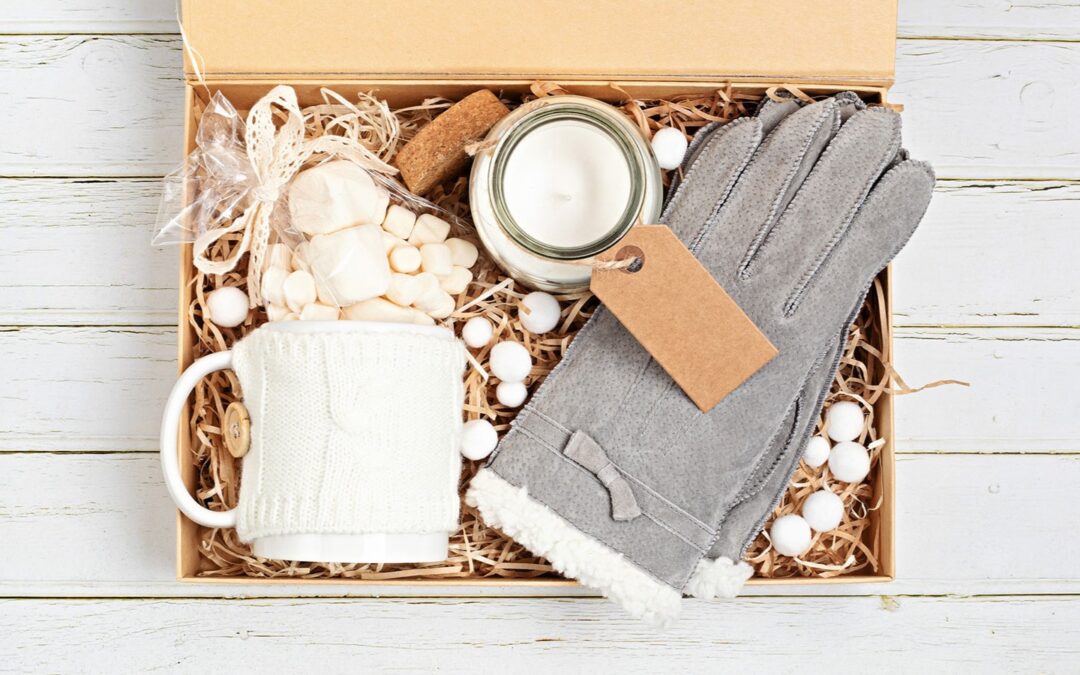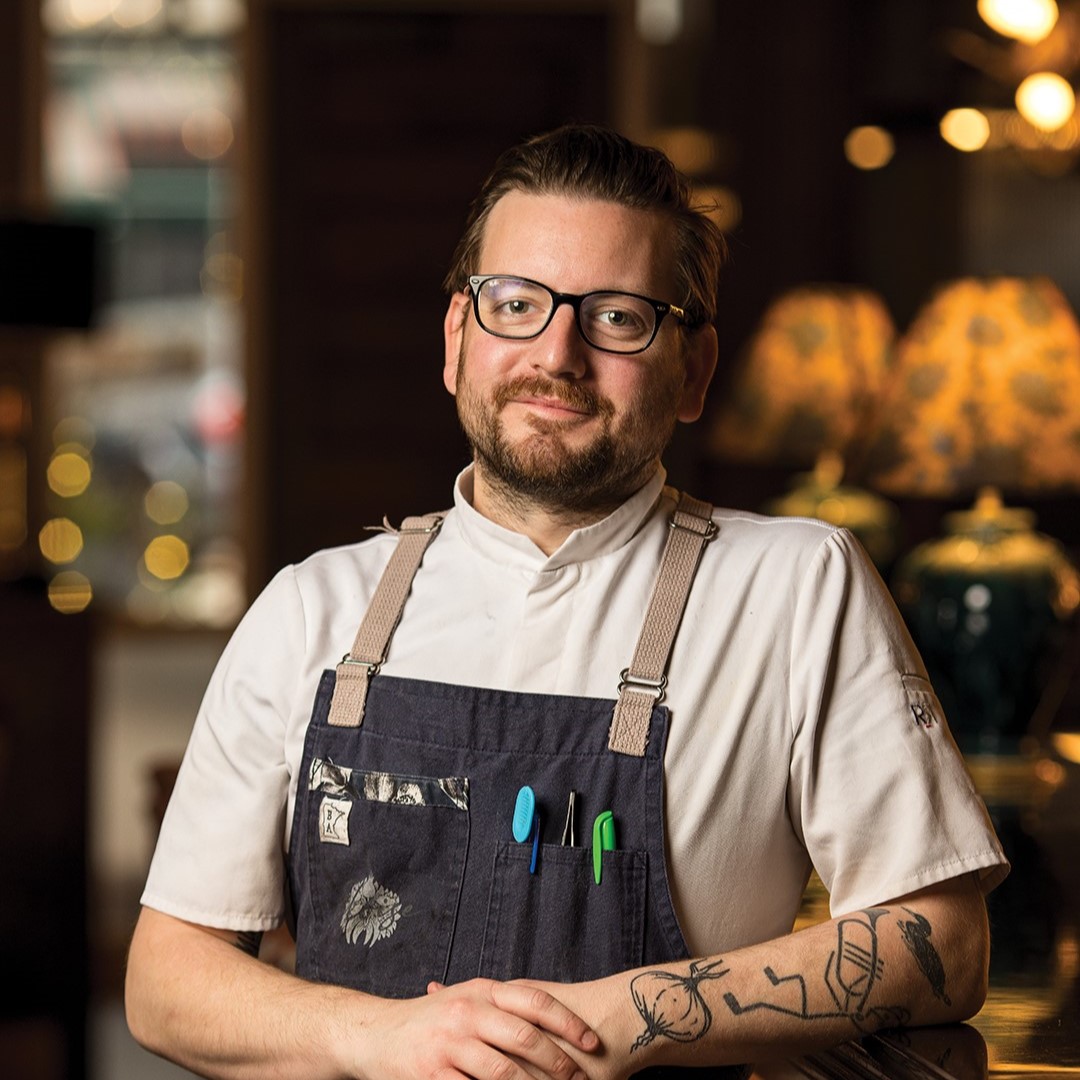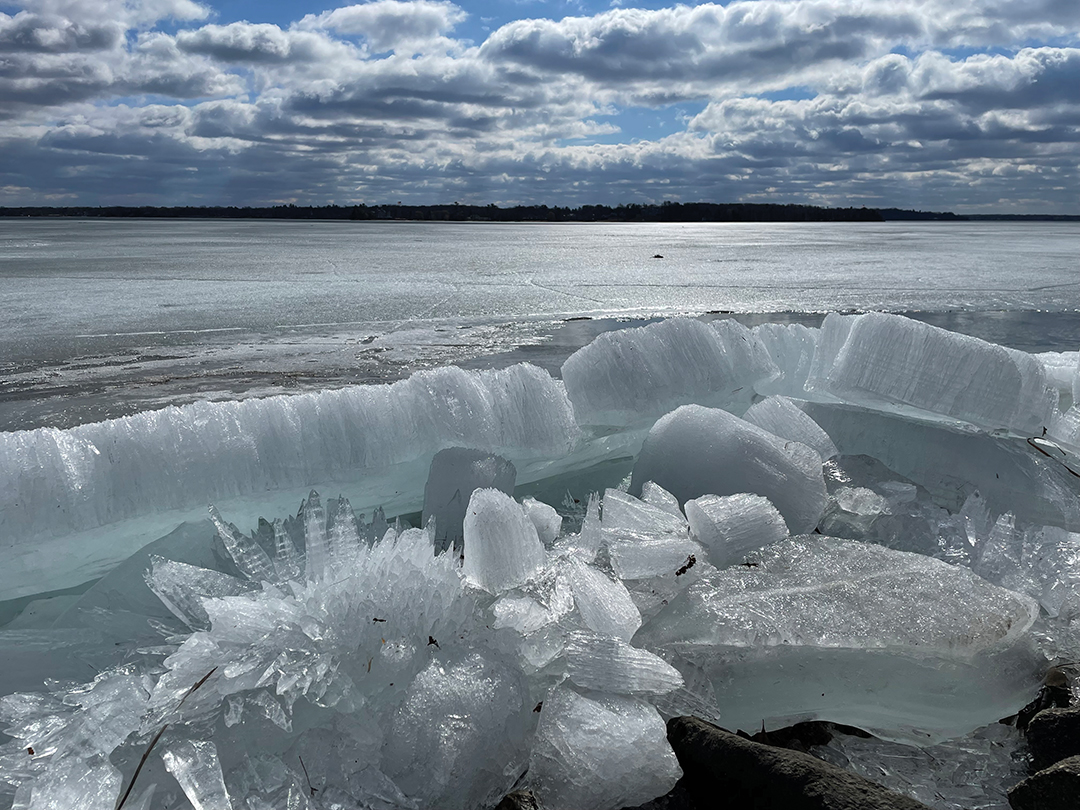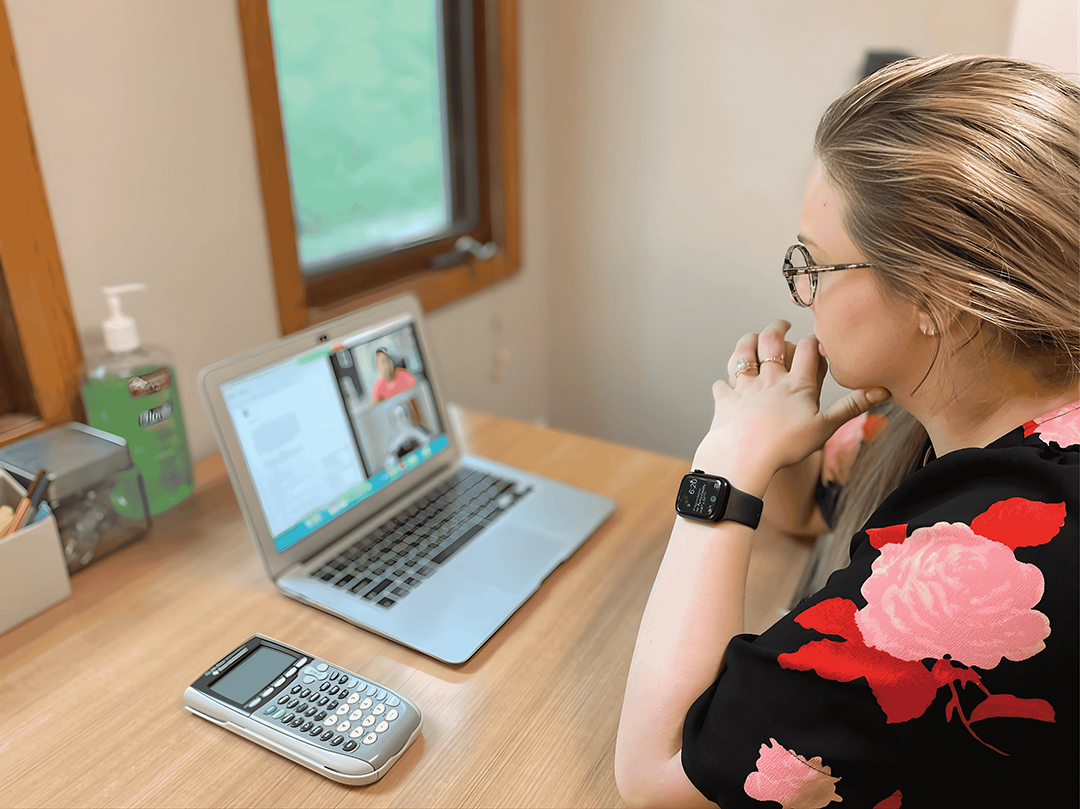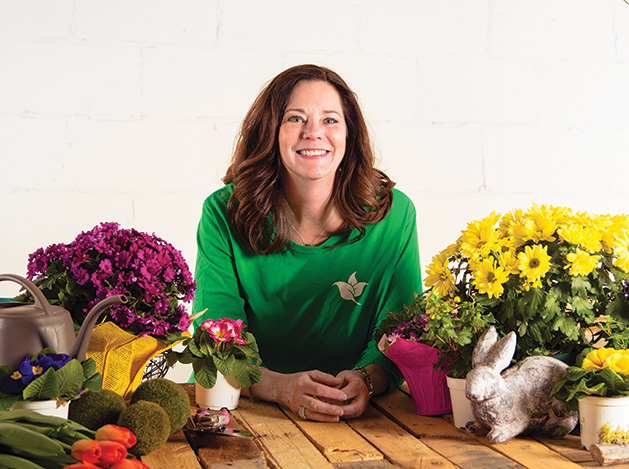
Photos: Joel Schnell
Minnetonka expert Lynn Messman shares advice for planting container gardens at home in early spring.
Click here for a step-by-step guide to making your own container garden. Should you put annuals or perennials in your container garden? Click here to find out.
Winter is finally over, but is it time to plant outside? Not yet, according to Lynn Messman, owner of Gardens by Lynn in Minnetonka. However, if you’re ready for some flowers and want to get a head start on the growing season, April is the perfect time to start planting an indoor container garden. Don’t have a green thumb? No problem. Messman offers some step-by-step instructions for creating a container garden—and you can do it all in the warmth of your garage, porch or basement.
When it comes to container gardens, Messman certainly knows her stuff. The gardeners at her company call themselves “gardenscapers” and devote their time to making beautiful gardens for businesses and residential homes alike. Messman and her team offer a wide spectrum of services, including planting and maintaining gardens—whether those are in the ground or in containers.
“Sometimes we have customers who have moved into a new house and aren’t quite sure what to do with [the yard],” Messman says. “We bring back to life overgrown gardens. Some people want us to do the planting and the maintenance; others maintain it themselves.”
Another focus of Gardens by Lynn is residential and commercial flower containers, and customers can request container gardens that are automatically refreshed seasonally. “We typically do all four seasons,” Messman says. “We’ll go in when the seasons change and refresh the containers with [plants that] will get them through the following season.”
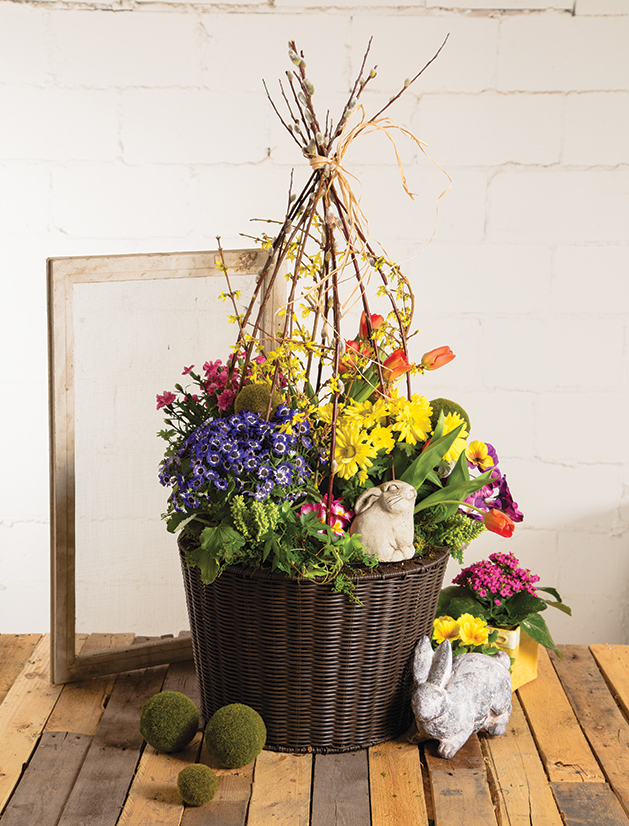
When it comes to planting outside, Messman discourages putting anything in the ground that can’t be moved before Memorial Day. That’s where container gardens come in. “We usually start doing our spring containers about mid-April,” Messman says. “In the spring, people are so ready to get rid of those spruce tops” from the holidays.
So, where do you start? In the spring, Messman recommends using pansies, tulips, kale, carnations and even mums in your containers.
“There are mums in the spring that look like daisies, but since they’re mums, they can take the cold. They look really pretty in planters,” Messman says.
And container gardens don’t have to hold just flowers. Messman recommends using vines and decorative moss to add different colors and textures to your planters.
“Vines are not as susceptible to a hard frost,” Messman says. “If they trail down you can cut those off and the plants will come back in the summer.”
As for artificial moss, that can be purchased at a nursery or craft store and added to your container. And think beyond plants: Bird houses, birds’ nests and bunny statues are the perfect addition to a small container garden.
Planter perfection
Ready for an easy, do-it-yourself container garden? Messman says the first step is getting an idea of what you want to plant. Not feeling creative? No problem. Simply go to your local nursery.
“They have a lot of planters already put together that you can buy,” Messman says. “Take a picture of it and recreate it yourself. You get the design aspect of it, but you can plant it on your own.”
Messman also offers a formula to keep in mind when choosing plants for your container garden: Each container should have a “thriller, filler and spiller.”
“The thriller is the central plant; the filler would be the ones in the middle of the pot; and the spiller would be things that come over the edge, like vines,” Messman says. “That formula helps a lot.”
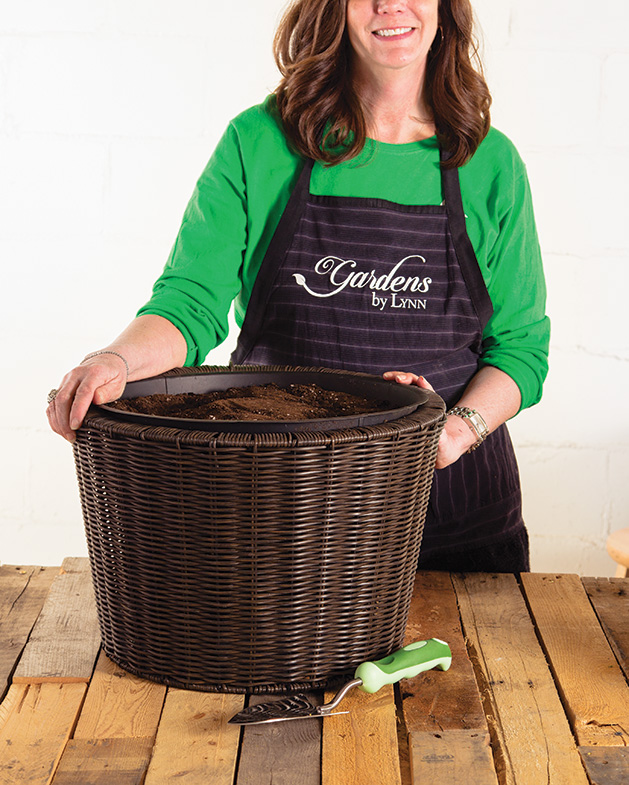
Choosing a container
The size of the container depends on how many flowers you’re planting.
“We use clay, plastic, ceramic, whatever you like,” Messman says. “The only thing to remember is that clay dries out fast. Also, don’t leave it outside over the winter because it will expand and crack.”
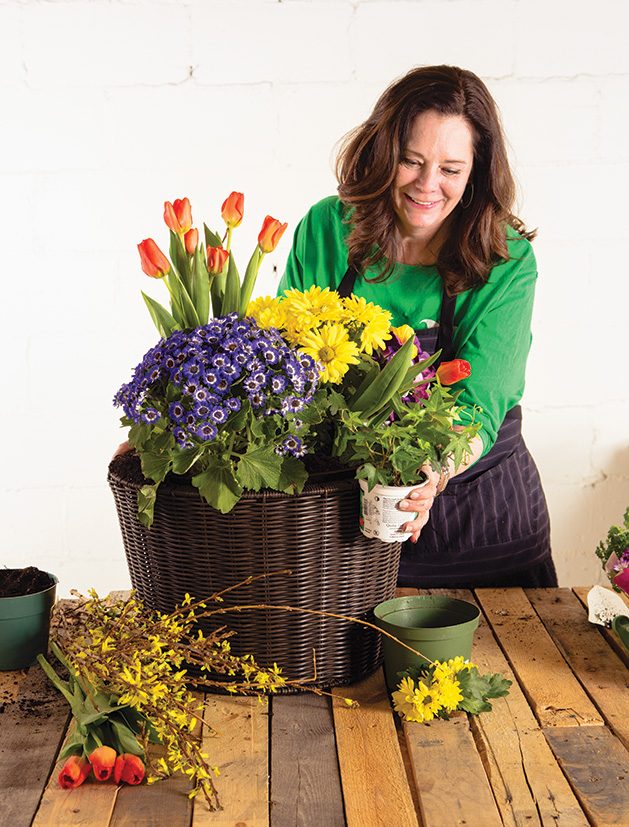
Arranging the plants
“I start out by taking the plants I’ve purchased and setting them in the planter before taking them out of the containers they come in,” Messman says. “Do they all fit? Do I need more? Where do I want the big daisy?”
Messman suggests picking a dominant plant to go in the center or toward the back of the container, and then choosing smaller plants that might have contrasting foliage or colors.
The good news? There is no right or wrong way to plant your container garden.
“It is about what your eye likes and what you like; it’s not about being perfect,” Messman says. “So much of it is trial and error.”

Herb and succulent gardens
Flowers aren’t your thing? April is also the perfect time to plant an herb or succulent container garden.
For the herb garden, Messman recommends starting with small herb plants rather than starting from seed.
“The key thing is they need six to eight hours of direct sunlight a day,” Messman says. Since there is not much shade in April, find a bright window for your herb garden. Messman explains that sunlight also gives herbs a better flavor.
And if you don’t have a window that works, you can use a task light with a CFL bulb for your herbs. Just make sure the herbs don’t touch the window or the light, where they could freeze or burn.
Messman recommends planting each herb in its own pot while they are indoors to make them easier to move around. You can combine them when you move them outside.
Good drainage is also essential for your herb garden. Make sure there are holes in whatever container you use.
As for containers, be creative.
“If you’re going to do an inside herb garden, make it fun,” Messman says. “You can use all different types of pots, different colors, use any kind of container as long as it has a hole. Punching holes in the bottom of a tomato can is a neat aesthetic.”
You can use your herbs inside all year, as long as you keep them pruned and fertilized with seaweed extract or a fish emulsion.
Planting a succulent garden can be a fun activity for kids.
“With the succulents, you can put them all in one container,” Messman says. “One fun thing to do with kids is have them pick out the succulents. They are all so different. Some look like sea creatures or shells. You can add some figurines like a fairy garden, a little bridge or gnomes or trolls or little animals. You can do a path through it with stones from your garden. Succulents are slow growing so you can see it grow all summer.”
Just make sure you have the right kind of soil; succulents need a sandy soil. They don’t need much sun or water, however, and can be indoors or out when the weather warms.
Starting from seed
If you’d like to start something from seed and watch it grow, Messman recommends planting the seeds about five weeks before Memorial Day.
“Zinnias, nasturtium, morning glories—you can start those inside and you get about a five-week head start before you bring them outside,” Messman says.
Other flowers that can be started from seed include marigolds, sunflowers and snap dragons, and vegetables like tomatoes and peppers.
When starting from seed, make sure you have good light and use a seed starting mix for the soil, Messman says. And be careful not to saturate your plants. Use a spray bottle rather than a watering can.
Gardens by Lynn
612.741.4203
Facebook: Gardens by Lynn
Instagram: @gardensbylynn


